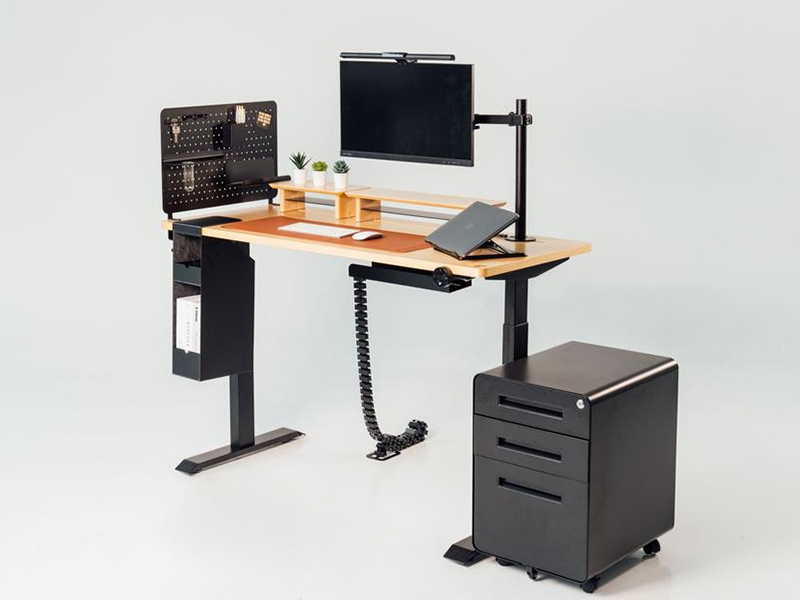Creating a DIY standing desk can be a rewarding project that offers both flexibility and a healthier workspace. A step-by-step guide to help you build your own standing desk using readily available materials.
Materials You’ll Need:
1. Tabletop: Choose a sturdy tabletop. You can repurpose an old table, a wooden door, or purchase a new one.
2. Legs or Adjustable Supports: Depending on your preference, you can use pre-made desk legs, adjustable legs, or metal pipes.
3. Screws and Brackets: Ensure you have enough screws and brackets to secure the legs to the tabletop.
4. Drill and Screwdriver: Essential tools for assembly.
5. Measuring Tape: To ensure accurate measurements.
6. Sandpaper and Finish (optional): For a smooth and polished look.
Step-by-Step Instructions:
1. Determine the Desired Height:
- The ideal height for a standing desk is where your elbows are at a 90-degree angle when typing. Typically, this height is around 40-42 inches from the ground but can vary depending on your height.
2. Prepare the Tabletop:
- Sand the edges and surface of the tabletop if needed to ensure a smooth finish. Apply a wood finish or paint if desired.
3. Attach the Legs or Supports:
- Fixed Legs: Measure and mark the positions where the legs will be attached. Ensure they are evenly spaced from each edge of the tabletop. Use brackets and screws to secure the legs to the tabletop.
- Adjustable Legs: Follow the manufacturer's instructions for installing adjustable legs. These usually come with their own set of screws and brackets.
4. Ensure Stability:
- Check that the desk is level and stable. You may need to adjust the legs or add additional brackets for extra support.
5. Add Casters (Optional):
- For added mobility, consider attaching casters to the bottom of the legs. Make sure to choose lockable casters to keep the desk stationary when needed.
6. Personalize Your Desk:
- Add any accessories or organizational tools you need, such as a monitor stand, cable management solutions, or a keyboard tray.
Tips for Using Your DIY Standing Desk:
- Start Slowly: If you’re new to standing desks, gradually increase the amount of time you spend standing each day to allow your body to adjust.
- Proper Posture: Stand with your feet shoulder-width apart, keep your shoulders relaxed, and your screen at eye level to avoid neck strain.
- Alternate Between Sitting and Standing: To avoid fatigue, alternate between sitting and standing throughout the day. Aim for a balance that works for you, such as the 20-8-2 rule (20 minutes sitting, 8 minutes standing, 2 minutes moving).
##Conclusion
Building a DIY standing desk is a straightforward project that can greatly enhance your workspace. With some basic materials and a little effort, you can create a customized desk that meets your ergonomic needs and supports a healthier work lifestyle. Happy building!
